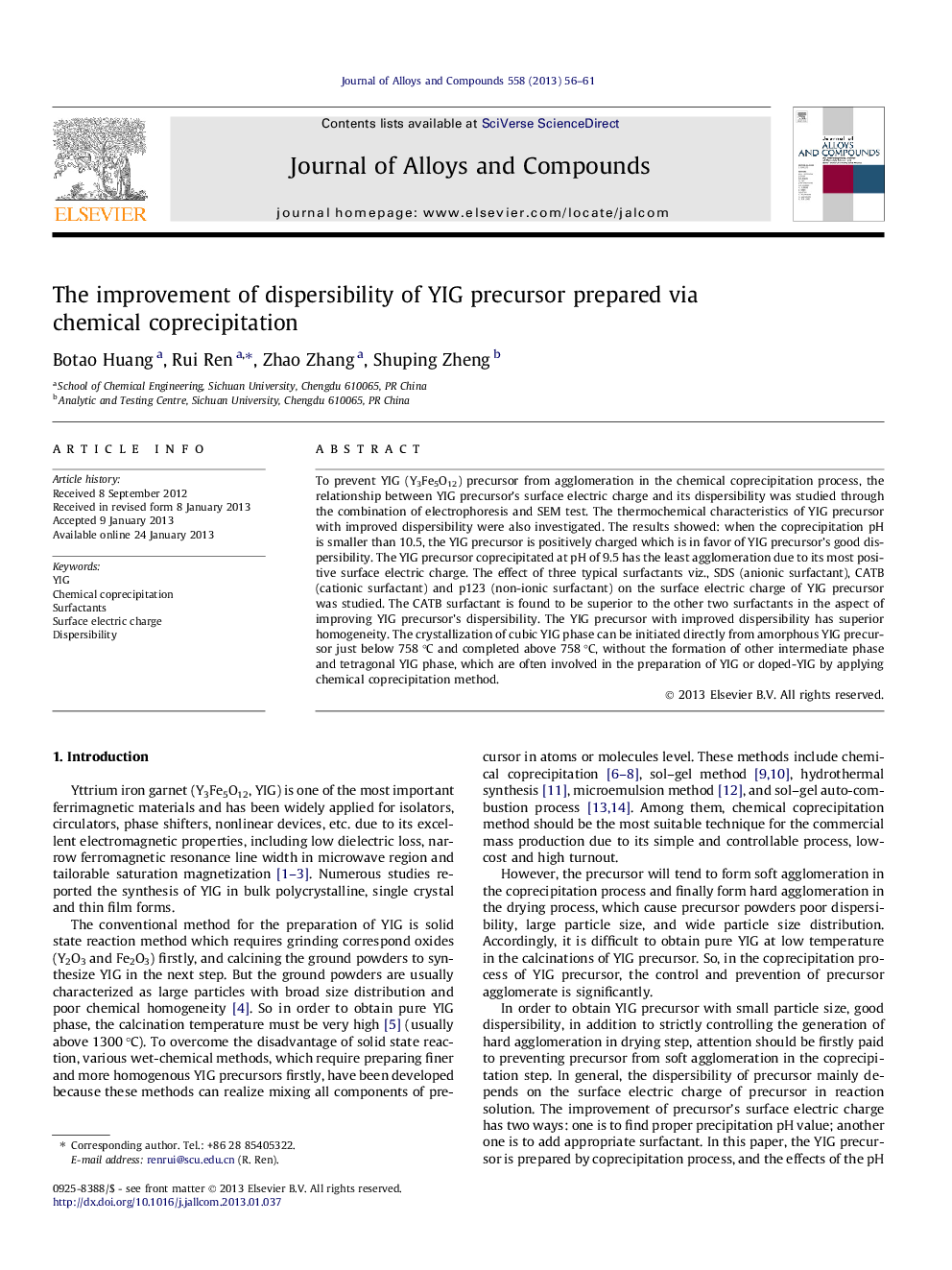| Article ID | Journal | Published Year | Pages | File Type |
|---|---|---|---|---|
| 1614455 | Journal of Alloys and Compounds | 2013 | 6 Pages |
To prevent YIG (Y3Fe5O12) precursor from agglomeration in the chemical coprecipitation process, the relationship between YIG precursor’s surface electric charge and its dispersibility was studied through the combination of electrophoresis and SEM test. The thermochemical characteristics of YIG precursor with improved dispersibility were also investigated. The results showed: when the coprecipitation pH is smaller than 10.5, the YIG precursor is positively charged which is in favor of YIG precursor’s good dispersibility. The YIG precursor coprecipitated at pH of 9.5 has the least agglomeration due to its most positive surface electric charge. The effect of three typical surfactants viz., SDS (anionic surfactant), CATB (cationic surfactant) and p123 (non-ionic surfactant) on the surface electric charge of YIG precursor was studied. The CATB surfactant is found to be superior to the other two surfactants in the aspect of improving YIG precursor’s dispersibility. The YIG precursor with improved dispersibility has superior homogeneity. The crystallization of cubic YIG phase can be initiated directly from amorphous YIG precursor just below 758 °C and completed above 758 °C, without the formation of other intermediate phase and tetragonal YIG phase, which are often involved in the preparation of YIG or doped-YIG by applying chemical coprecipitation method.
► The YIG precursor possessing positive surface electric charge has less agglomeration. ► CATB is superior to SDS and p123 in improving YIG precursor’s dispersibility. ► The crystallization of pure cubic YIG phase can be initiated below 758 °C and completed above 758 °C. ► The YIG precursor with improved dispersibility has superior homogeneity.
